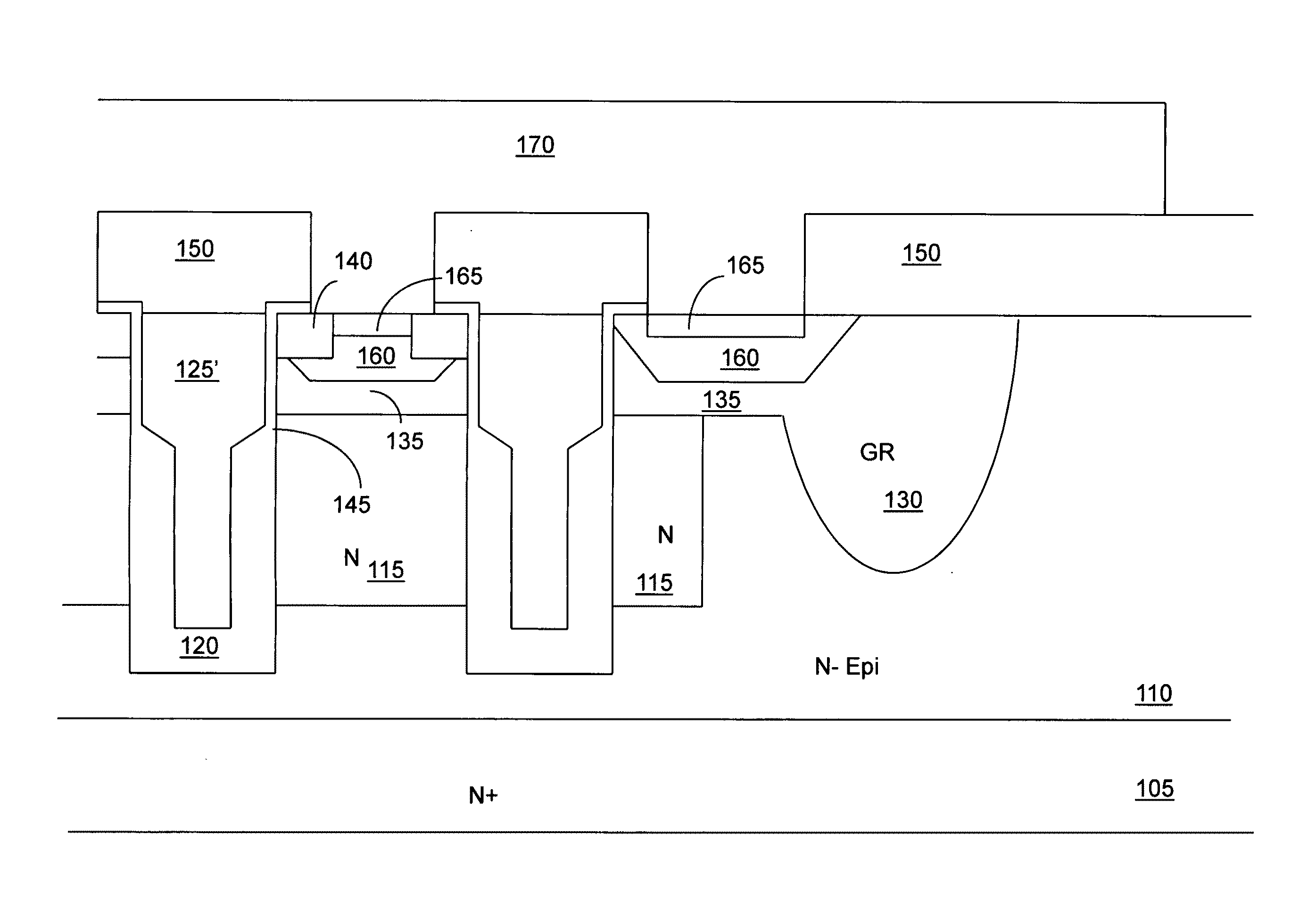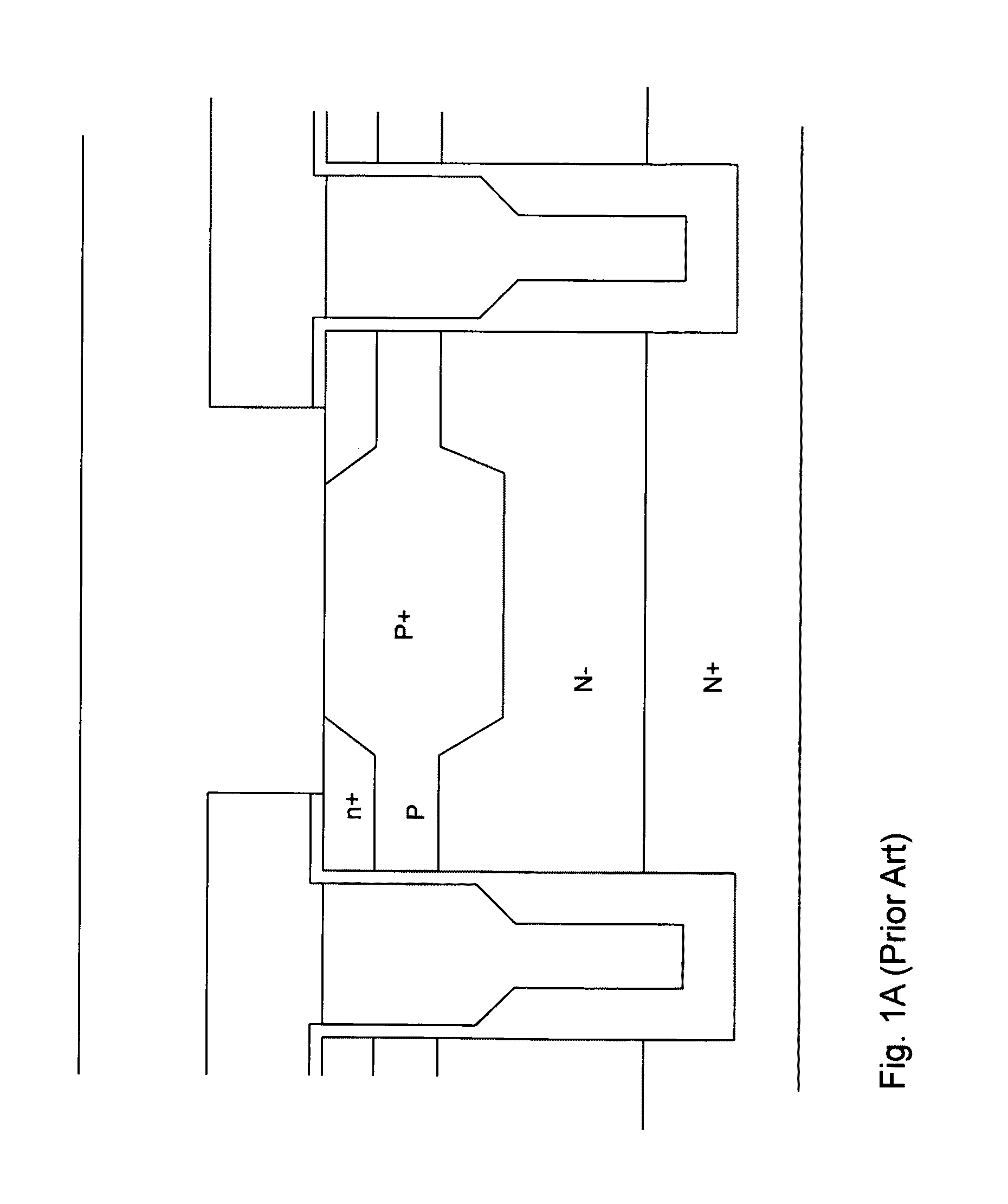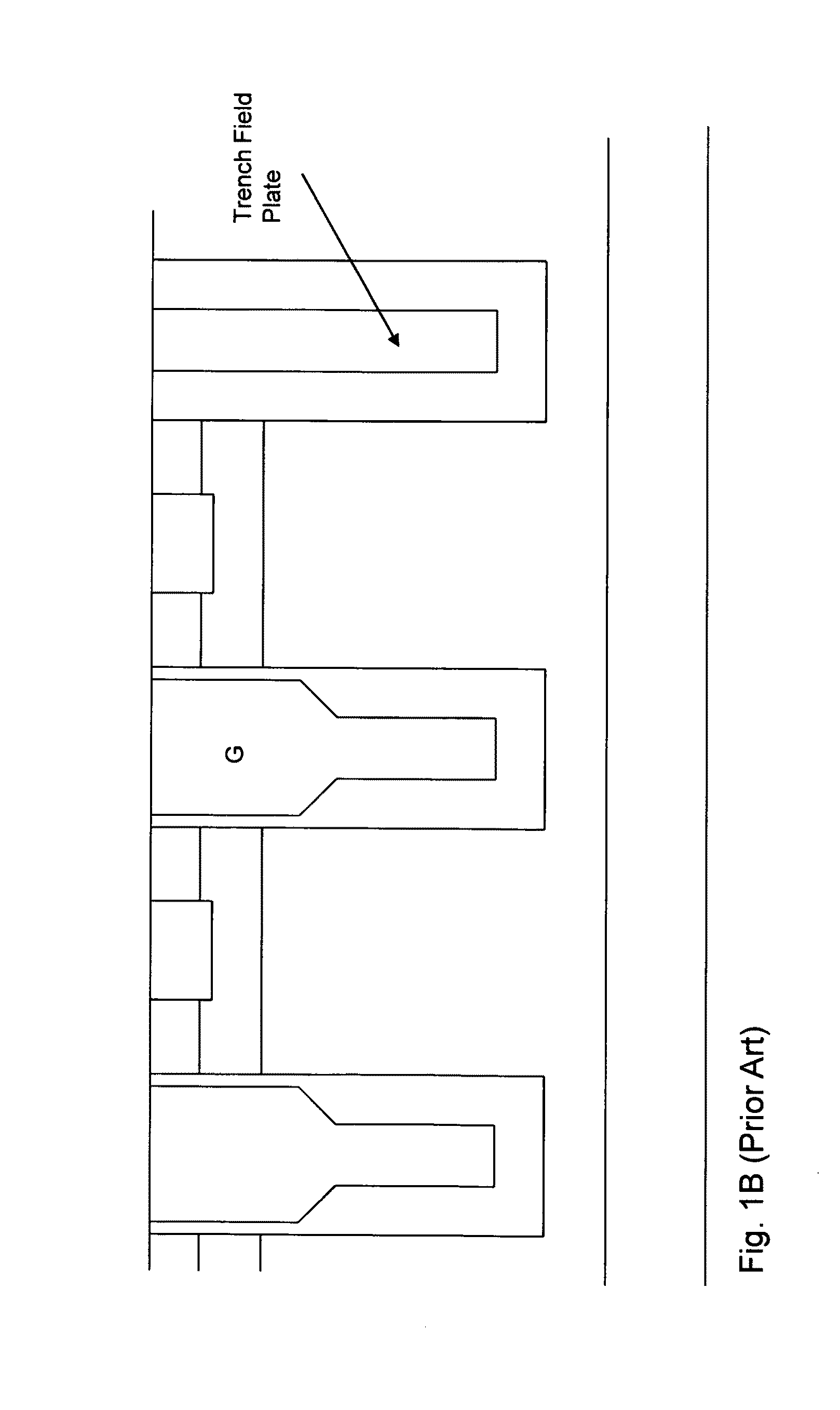Methods for manufacturing trench MOSFET with implanted drift region
a technology of drift region and manufacturing method, which is applied in the direction of semiconductor power devices, electrical equipment, basic electric elements, etc., can solve the problems of epitaxial resistivity, further technical difficulties and limitations of device implementation, and device designers now face another technical difficulty, so as to reduce gate to drain capacitance and reduce rds. , the effect of further improving the performance of the devi
- Summary
- Abstract
- Description
- Claims
- Application Information
AI Technical Summary
Benefits of technology
Problems solved by technology
Method used
Image
Examples
Embodiment Construction
[0020]Referring to FIG. 2 for a side cross sectional view of a MOSFET device 100 formed on a N+ substrate 105 supporting an N-epitaxial layer 110 with trenched polysilicon gates. Each of these trenched gates includes a top gate segment 155 and a bottom gate segment 125 insulated by an inter-gate-segment oxide layer 145. The bottom gate segment 125 is padded by a thick oxide layer 120 and the top gate segment is padded by a normal gate oxide layer 145′ that is formed by the same oxide layer growth process as the inter-gate-segment insulation oxide 145. A plurality of P-body regions 135 surround the trenched gates that include the top and bottom gate segments 125 and 155 respectively. The body regions 135 further encompassed source regions 140 formed near the top surface of the epitaxial layer 110 surrounding the trenched gates. The areas on the top surface between adjacent source regions 140 are implemented as source contact surface. For the purpose of enhancing device ruggedness or ...
PUM
 Login to View More
Login to View More Abstract
Description
Claims
Application Information
 Login to View More
Login to View More - R&D
- Intellectual Property
- Life Sciences
- Materials
- Tech Scout
- Unparalleled Data Quality
- Higher Quality Content
- 60% Fewer Hallucinations
Browse by: Latest US Patents, China's latest patents, Technical Efficacy Thesaurus, Application Domain, Technology Topic, Popular Technical Reports.
© 2025 PatSnap. All rights reserved.Legal|Privacy policy|Modern Slavery Act Transparency Statement|Sitemap|About US| Contact US: help@patsnap.com



